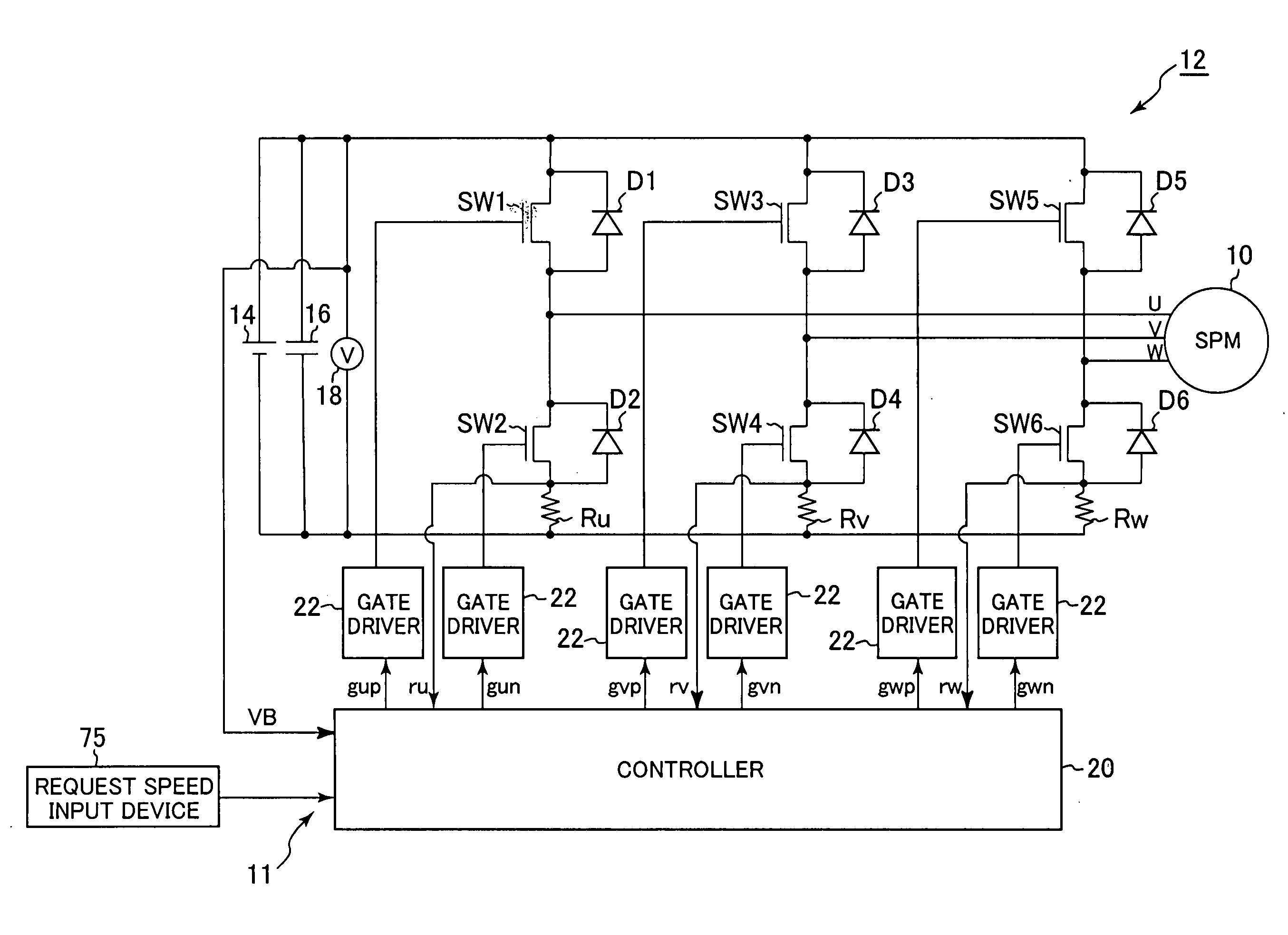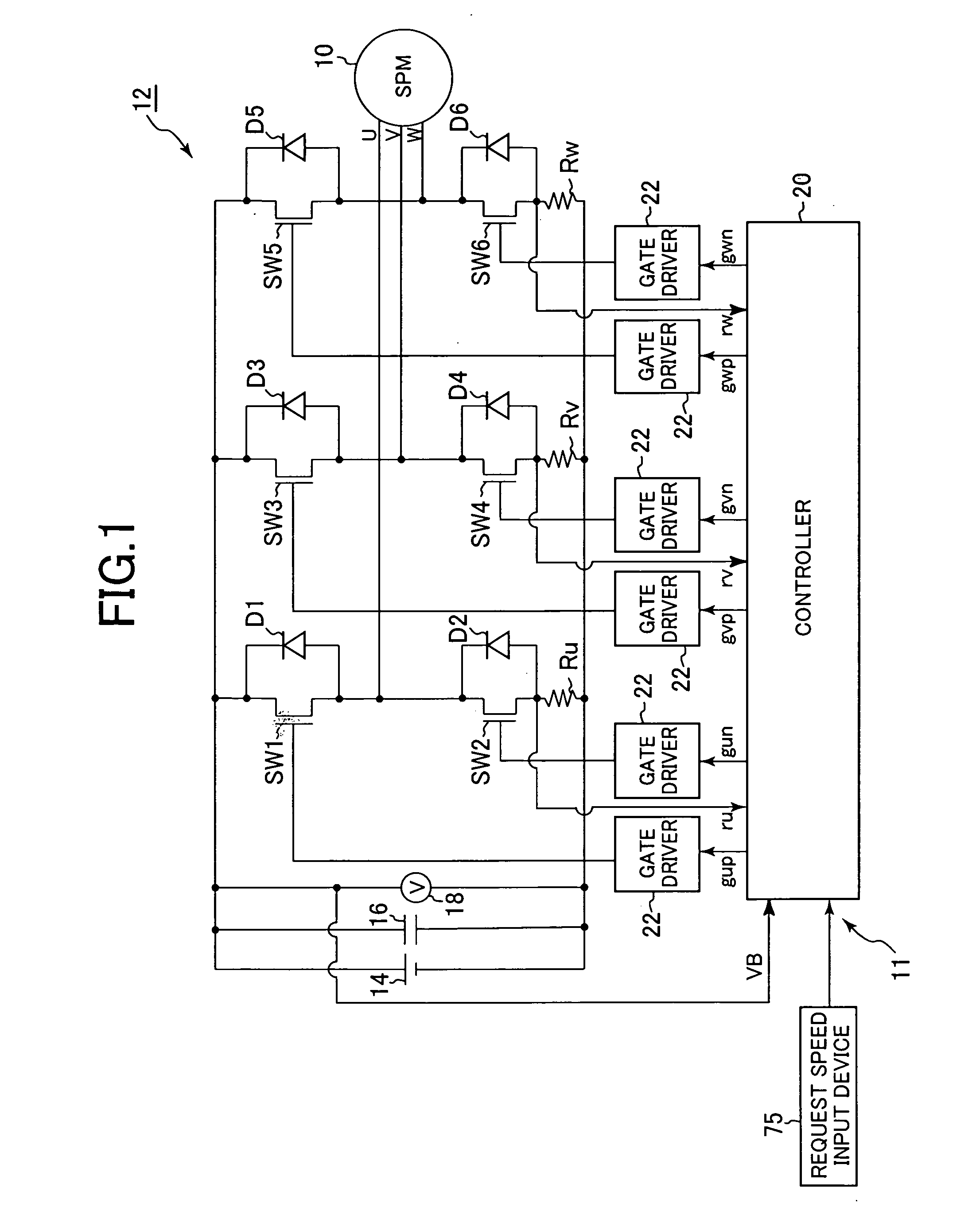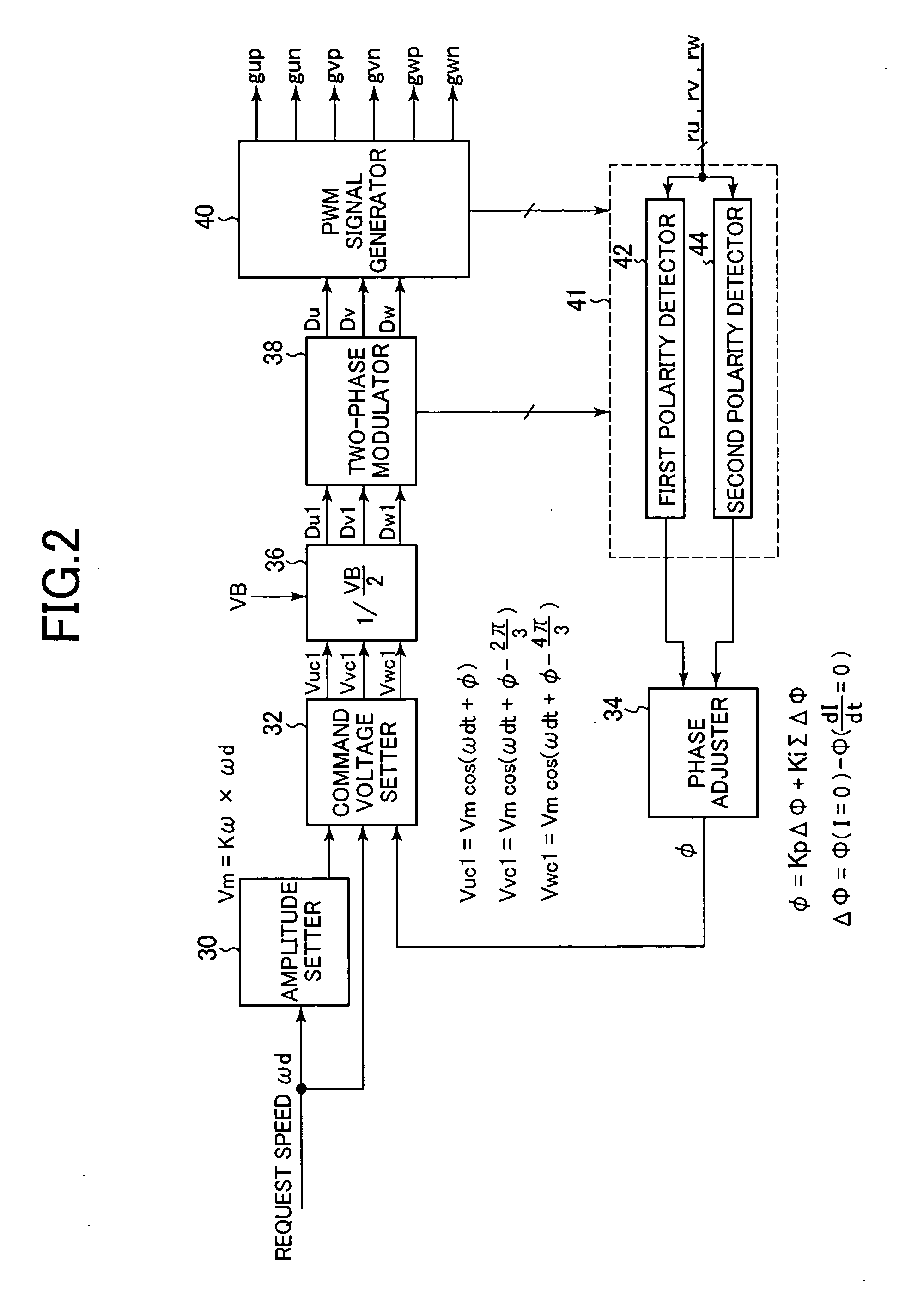Control system for multiphase rotary machines
a control system and multi-phase technology, applied in the direction of motor/generator/converter stopper, dynamo-electric converter control, instruments, etc., can solve the problems of increasing the difficulty of performing sensorless control, affecting the accuracy of phase current measurement, etc., and achieve the effect of sufficient tim
- Summary
- Abstract
- Description
- Claims
- Application Information
AI Technical Summary
Benefits of technology
Problems solved by technology
Method used
Image
Examples
first embodiment
[0077]Referring to the drawings, particularly to FIG. 1, there is illustrated an interior magnet synchronous motor, referred to simply as “motor”10, and a control system 11 for controlling the motor 10. The motor 10 serves as, for instance, a blower motor of the in-vehicle air conditioner.
[0078]For example, the motor 10 is provided with an annular rotor having a rotor core. The rotor core of the rotor is provided at its circumferential portion with at least one N and S pole pair (see FIG. 7B).
[0079]The stator includes a stator core with, for example, an annular shape in its lateral cross section. The stator core is disposed around the outer periphery of the rotor core such that the inner periphery of the stator core is opposite to the outer periphery of the rotor core with a predetermined air gap.
[0080]The stator core also has a plurality of slots. The slots are formed through the stator core and are circumferentially arranged at given intervals. The stator also includes a set of th...
second embodiment
[0220]A control system for a motor according to a second embodiment of the present invention will be described hereinafter. The structure of the control system is substantially identical to that of the control system 11 according to the first embodiment except for some differences described hereinafter.
[0221]Thus, like reference characters are assigned to like parts in the control systems according to the first and second embodiments, and therefore, descriptions of the structure of control system, except for some differences, according to the second embodiment are simplified or omitted.
[0222]The control system according to the second embodiment is specially designed to adjust, in place of the phase φ, the electrical angular rate ω or ωd of the rotor each of the command voltages Vuc1, Vvc1, and Vwc1 based on the temporal difference ΔΦ of the phase of a target line-to-line current at the zero crossing Φ(I=0) with respect to the phase of polarity inversion of the amount of change in th...
third embodiment
[0233]A control system for a motor according to a third embodiment of the present invention will be described hereinafter. The structure of the control system is substantially identical to that of the control system 11 according to the first embodiment except for some differences described hereinafter.
[0234]Thus, like reference characters are assigned to like parts in the control systems according to the first and third embodiments, and therefore, descriptions of the structure of control system, except for some differences, according to the third embodiment are simplified or omitted.
[0235]The control system according to the third embodiment is specially designed to adjust, in place of the phase φ, the amplitude Vm of each of the command voltages Vuc1, Vvc1, and Vwc1 based on the temporal difference ΔΦ of the phase of a target line-to-line current at the zero crossing Φ(I=0) with respect to the phase of polarity inversion of the amount of change in the target line-to-line current at ...
PUM
 Login to View More
Login to View More Abstract
Description
Claims
Application Information
 Login to View More
Login to View More - R&D
- Intellectual Property
- Life Sciences
- Materials
- Tech Scout
- Unparalleled Data Quality
- Higher Quality Content
- 60% Fewer Hallucinations
Browse by: Latest US Patents, China's latest patents, Technical Efficacy Thesaurus, Application Domain, Technology Topic, Popular Technical Reports.
© 2025 PatSnap. All rights reserved.Legal|Privacy policy|Modern Slavery Act Transparency Statement|Sitemap|About US| Contact US: help@patsnap.com



